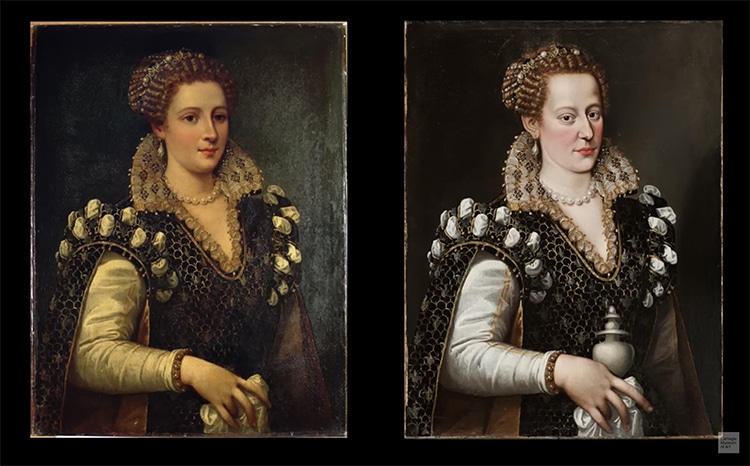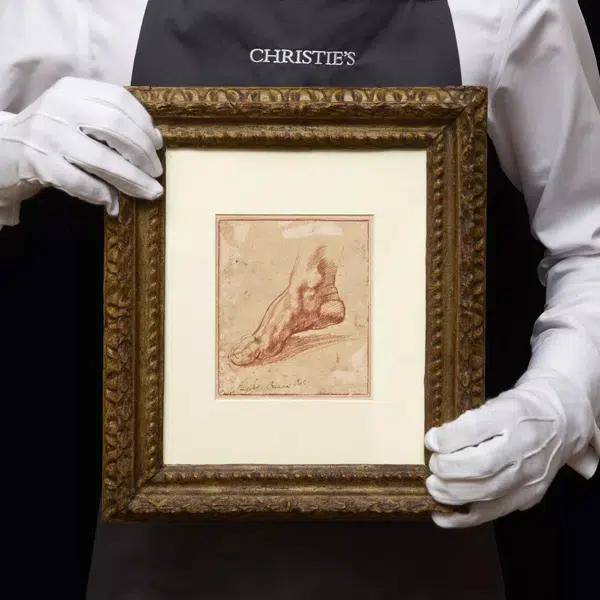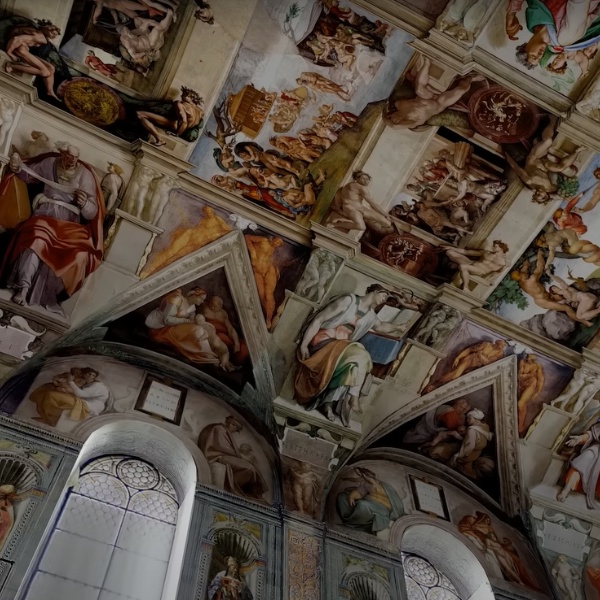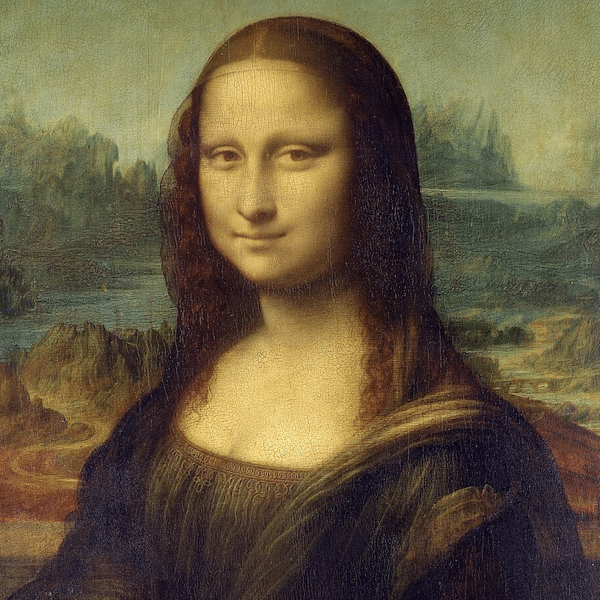
The painting before (left) and after (right) the removal of the Victorian overpainting and careful restoration of the original. (Photo: screenshot of video from Carnegie Museum of Art)
Years ago, a painting of a young woman ended up at The Metropolitan Museum of Art. The museum was not very impressed by the benign, uninspired face of the sitter, leading to the painting's eventual deaccession from the collection. Instead, it found its way into the collection of the Carnegie Museum of Art in Pittsburgh, Pennsylvania. It then sat in the basement, unseen, until it caught the eye of Louise Lippincott, a former museum curator. She showed the work to chief conservator Ellen Baxter, who worked her magic to transform a mediocre work into its original, elegant form. The shocking before and after, documented in 2014, demonstrated the many transformations a work can go through over the centuries.
Originally, the painting was thought to depict Eleanor of Toledo, wife of Cosimo I de’ Medici, who ruled Florence. A sticker on the back frame alleges the painter was court artist Bronzino. However, Baxter suspected the truth was hidden within, under the pretty yet unremarkable features of the young woman. An x-ray scan confirmed that beneath the face was another one, with larger features and much more character. Beneath the petite hand was a larger one, and it held a vase which had later been painted over. The 16th-century painting had clearly undergone a transformation in the 19th century. The wood panel on which it was painted was shaved down to a very thin strip which was then affixed to canvas. Meanwhile, the face and hand of the woman were overpainted with a more Victorian, delicate image that lacked the vibrance of the original.
Baxter removed the old varnish covering the painting and slowly removed the 19th-century paint as well. Beneath it is the remarkable face of Isabella de’ Medici, daughter of Cosimo I and Eleanor of Toledo. While not certain, the work was likely done by Alessandro Allori, who trained under Bronzino. The work was then fully conserved to restore its original glory, with careful varnish and delicate inpainting to fix flaking. Baxter notes in a video of the process that she is careful to match color and texture while resisting the urge to “put [herself] in the painting.” Her work is engaging, and she talks to the painting pleasantly as she restores its glory. These restorations follow certain ethical rules of transparency.
Baxter's efforts are in service of presenting the princess in her glory, as the “Paris Hilton” of the day. Rich and wild, she took lovers and spent, spent, spent. She was well-educated and witty, but her intrigues may have contributed to her untimely death. Officially it was attributed to dropping dead while washing her hair, but historians believe her husband murdered her in revenge and anger for her affairs. As baxter describes her life, “a bad end, but a good story.” Painted in this newly uncovered work with a small vase typical of Mary Magdalene depictions, Lippincott explained to Carnegie Museums, “This [portrait] is literally the bad girl seeing the light.”
A painting of Isabella de' Medici was restored after being obscured under 19th-century additions. The subject was the “Paris Hilton” of the Italian Renaissance, known as the society “party girl” of the Medici family in the 16th century.
h/t: [Open Culture]
Related Articles:
8 Famous Michelangelo Sculptures That Transformed Art
The Captivating History and Enduring Influence of Italian Renaissance Art
Family Discovers Their Living Room Painting Is a Lost Masterpiece Worth Millions
Secret Room of Michelangelo’s Drawings Will Open to the Public for the First Time Ever






















































































